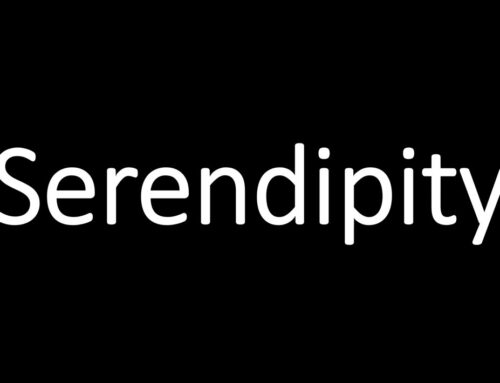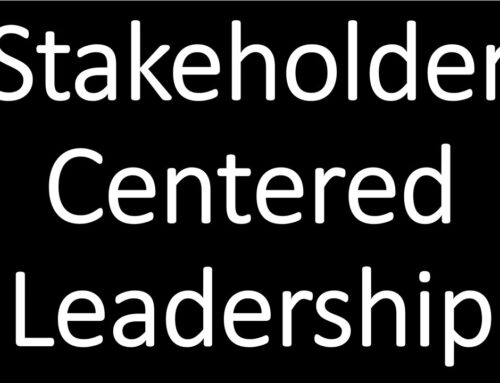Collaboration and Performance. How we work together has never before been more important to deliver business results. And can always be improved.
Stakeholder Centered Leadership is a process which delivers improved collaboration and performance. Co-created by hundreds of CEO’s and coaches, this structured and simple process consistently unlocks measurable improvements in collaboration and performance.
Stakeholder Centered Leadership is ALWAYS based on the collective wisdom and frequent active contributions of your team. Simple and structured – – -not easy – – – Stakeholder Centered Leadership works equally well whether you implement it yourself or with the support of a coach.
Curious to learn more about this highly time efficient process leveraged by CEO’s? Read on.
Based on work accompanying dozens of successful leaders, leveraging these seven guidelines makes improving leadership growth faster, more impactful and even more fun!
First a short list of all seven steps. Plus one added bonus step which requires working with a coach or a coachlike leader. Details follow later. You are invited to access these on an “as curious” basis.
Whether you choose to “Do It Yourself” or with the support of a coachlike leader in your business, the following seven elements are essential to get the most from your efforts.
- Start with one or more assessments to establish the current and desired “future perfect” state for the individual or collective team.
- Limit the focus to one or two leadership growth goals with the highest Return on Investment.
- Complete a comprehensive – – – minimum 10 benefits and 3-4 costs – – – analysis of the value of improvement.
- Execute a (written) agreement with each leader to insure integrity of the process.
- Formally enroll coworkers to provide regular FeedForward suggestions to support the targeted leadership growth.
- Create and communicate to coworkers a monthly action plan building on the FeedForwards. Ideal is 10-12 refresh cycles over a year. If you seek faster results, consider using an app to capture, share and even gamify (p)reflections to accelerate learning and change.
- Measure the results with a mini survey based on responses from the coworkers on the receiving end of leadership.
- (Optional for even better results) Capture and share reflections on your leadership growth edge in an app or similar and schedule a weekly call to discuss with your coachlike leader or coach.
Following these steps has helped thousands of successful leaders to be recognized and acknowledged as better leaders by their coworkers. Let’s take a deeper dive.
1. Start with one or more assessments
With literally thousands of assessments available, choosing can be a hot mess. These four options have worked best in my practice coaching dozens of leaders to measurable leadership growth in the eyes of those on the receiving end of leadership:
i. The WHY Institute offers perhaps the most simple, efficient and powerful self-assessment – with no ratings by coworkers – building on the work of Simon Sinek.When we know and can clearly articulate our WHY, our path through life, past, present and future becomes much clearer. Less than 10 minutes are needed to discover your individual WHY. Reckon on an hour to discover, articulate and debrief individually or 2-3 hours as a powerful teambuilding exercise.
ii. Belbin Team Role Profiles are a “light” (think 10 minutes per coworker to complete) 360° assessment based on work with hundreds of teams at Henley Business School. A powerful team and individual diagnostic, Belbin uncovers blind spots using a 9 essential team role framework. The easy to interpret 1 to 100 percentile scale, based on millions of assessments makes creating action experiments wonderfully easy. Belbin provides forensics to map a team before a project begins. Imagine the value of identifying the missing or overly abundant team role on your mission critical teams. Helping teams to see collaboration and performance issues before they arise or even when there is still a chance to course correct is what makes Belbin so popular with mission critical teams.
iii. The Leadership Circle is most comprehensive, single page summarized360° assessment based on the science which I have found. A bit heavy; worth the time for those who wish to leverage data to get to the root causes of their behaviors and unleash their very best selves. Between 8 and 20 coworkers invest up to 30 minutes to answer 128 questions + add written comments. One successful pharmaco has gathered tens of millions of data points on their leadership and uses this to advance providing medicines to the world.
The Leadership Circle provides even greater forensics than Belbin, including self and observer percentile values on 37 separate leadership tendencies. The statistical correlations between the different tendencies help uncover and address our deepest hidden fears. Shining light on these “reactive” tendencies identifies behaviors which are superpowers in certain contexts, yet the same superpowers can – with no bad intention – destroy collaboration and performance when overused. The good news is this assessment opens the door to very specific and focused leadership growth. Like training a muscle. Simple, not easy. Free, self-only version here.
iv. Finally, individual behavioral interviews with stakeholders are a powerful assessment tool. Confidential and anonymous, with results shared only with the leader. Expect at least a day of work here, for conducting 6-12 interviews and writing up multiple pages of precious feedback. Internal coaches can run into challenges with full disclosure and trust. GE, for example, recruited only coaches from unrelated businesses when they conducted their own behavioral interviews in order to preserve confidentiality.
2. Limit the Focus to One or Two Goals
Every successful leader always has blind spots and multiple areas to work on. Several options exist in selecting goals. Is your priority to learn this Stakeholder Centered Leadership process to repeat in the future, or are you looking to get clarity on your one leadership growth edge?
Some prefer the use of well facilitated team session to help the leader choose in a few hours from lists such as 20 Commonly Chosen Leadership Growth Areas, or the classic from Marshall Goldsmith, 20 Ineffective Habits of Successful Leaders or Sally Helgesen’s on habits holding women back.
Working with an experienced coach – internal or external – can help to unleash the value from the chosen assessment(s) and identify your individual highest Return on Investment growth goal.
And for those leaders unable to limit your choice of growth goals to only one or two, an often suggested leadership growth goal is to be more decisive. Just choose one!
3. Complete a Cost/Benefit Analysis
Easy and costly to skip over a well reflected Cost/Benefit Analysis keeps the process going when the going gets tough. (Which it will) The more reflected and factual this analysis is conducted, the greater your chance of success. As a beginning coach, I was not diligent in insisting on a detailed Cost/Benefit Analysis, resulting often in lost time and momentum. The Cost/Benefit analysis is so critical that it is covered multiple times in the theoretical and practice sessions for Stakeholder Centered Coaching training.
4. Execute a written contract
Contracting provides the foundation for change. Many successful leaders appreciate a simple, single page contract with the top 10 agreements for both the coach and the champion. If you are not convinced in the value of a contract, many successful leaders have found expectations vs. agreements useful. Easy and costly to skip like the Cost/Benefit analysis slowing down with a contract allows greater speed and consistency later when the going gets more difficult Whenever one of my coaches (I have used many) progress is accelerated. To those who held me accountable, thank you!
5. Formally enroll the coworkers to provide regular FeedForward suggestions
Stakeholder Centered Leadership engages leaders and co-workers help one other to get a little bit better. In today’s ever more hectic and complex world, engaging others to help improve collaboration and performance only takes minutes. Whether you choose to enroll co-coworkers individually or in a short meeting, helping your Stakeholders to understand the process and their WIIFM (What’s In It for Me) saves all time in the long run.
6. Create an action plan from the FeedForwards and communicate to the coworkers
So simple and yet so powerful! Because Stakeholder Centered Leadership is not about ONLY changing leadership behaviors, but also about having the positive change acknowledged and recognized by Stakeholders, the action plan is your regular “marketing.” Enrolls your stakeholders to hold yourself accountable. Together we are stronger.
The action plan is an opportunity to demonstrate respect for the time of your Stakeholders. The most courteous Action Plans are emails between 150 and 200 words. Including your leadership growth goals. Less is more.
7. Measure the results with a mini survey
Stakeholder Centered Leadership is about unleashing the energy of not only yourself – – – also your coworkers. The higher the leadership position, the more the work is about helping others to achieve more. The power of Stakeholder Centered Leadership is that the voice of the Stakeholders is the final evaluation of leadership.
8. Best Practice?!? Capture and Share Daily Reflections on your Leadership Growth Edge and discuss weekly with your coachlike leader or coach
When time for leadership growth is in short supply, or a fast measurable improvement in leadership growth is a priority, nothing beats a 15-30 minute weekly review of your daily reflections with a coachlike leader or coach. How does this process work?
i. Define your questions. Building on your assessment, work with your coachlike leader or coach to define 2-10 daily questions. Written text (p)reflectionsdocumenting experiments, successes and failures past and planned are often the most powerful.
ii. Take 2-5 minutes daily to answer your daily questions, ideally in an app which the coach can access. Many leaders find a daily reminder useful. This simple app works brilliantly for capturing daily questions and responses, and also offers mini survey, notetaking and scheduling capabilities.
iii. The coachlike leader or coach thoroughly reviews the responses before step
iv. In a short one on one call, discuss and celebrate the progress of the previous week and plan new experiments for the week ahead.
Whether you choose to work with an external coach or drive this process with internal resources, Stakeholder Centered Leadership is a proven effective and highly time efficient approach to improve collaboration and performance. And if you are curious to learn more about the heritage of Stakeholder Centered Leadership and Marshall Goldsmith, this documentary is a good start.
My Why is to find and share a better way. This desire to find and share nudges me to invite you as a reader to please leave a comment below.
- Which of the seven do you consider most essential?
- And which other factors have I missed?
Life is Good!
Bill Zeeb and the infinitas team help successful leaders and teams to be recognized and acknowledged by their coworkers as measurably more effective in 12 months or less. Guaranteed. Bill’s passion is to find and share a better way to leadership growth leveraging the scientific method and a highly structured and highly time efficient process proven with hundreds of CEO’s. A US citizen, who has lived and worked in Europe since 1990, Bill loves skiing 100+ days in one season, competing in extreme triathlons (first ever podium Alpes d’Huez 2019) and working with leaders who are ready to do the hard work to achieve extreme leadership and business growth, to better serve their teams and become better ancestors.





